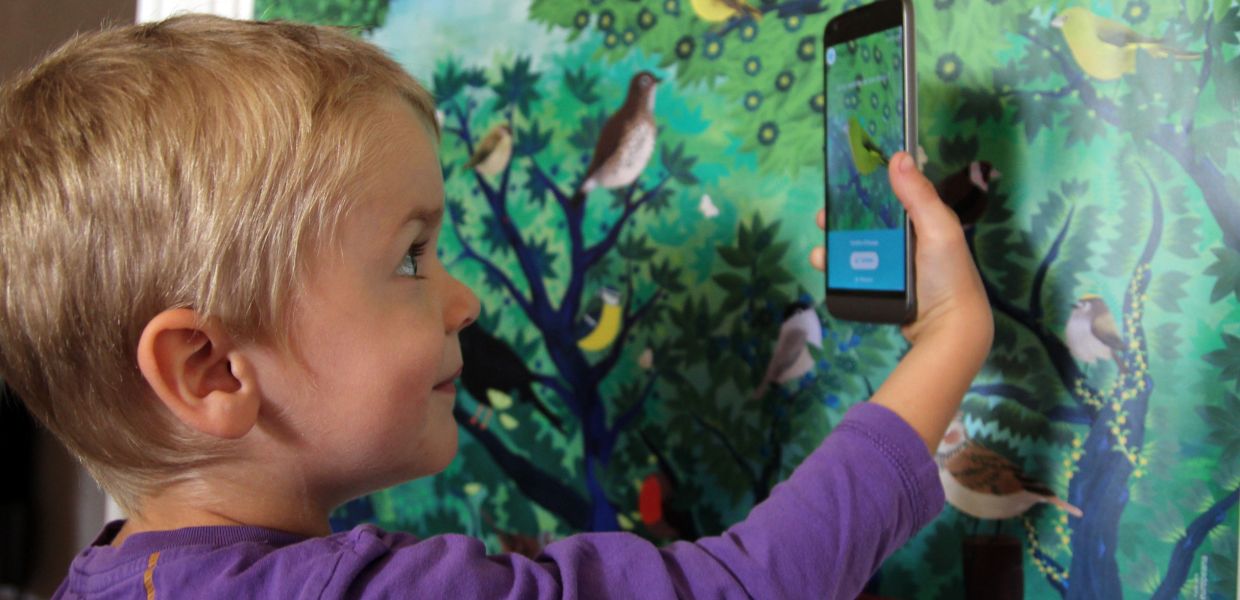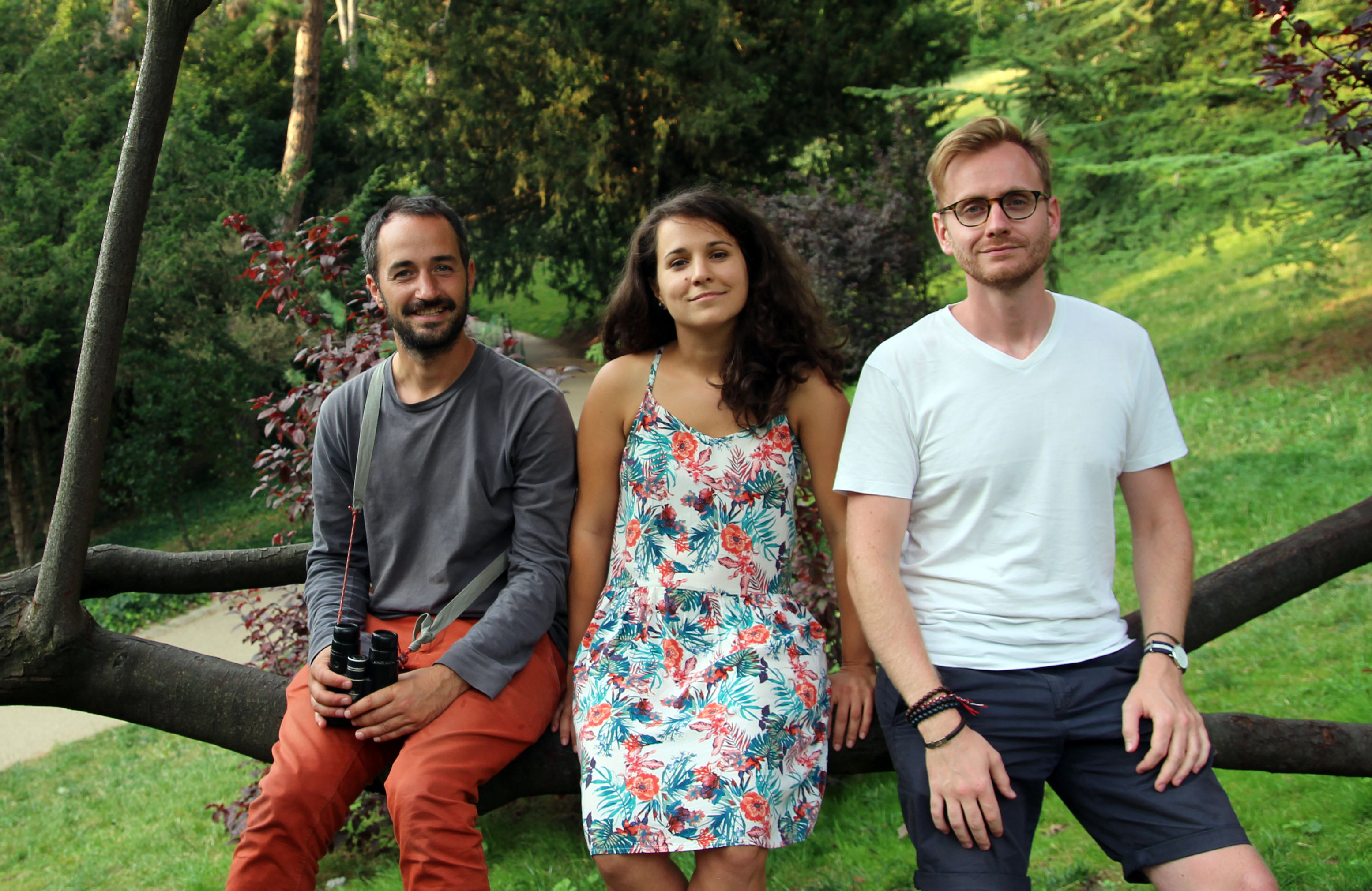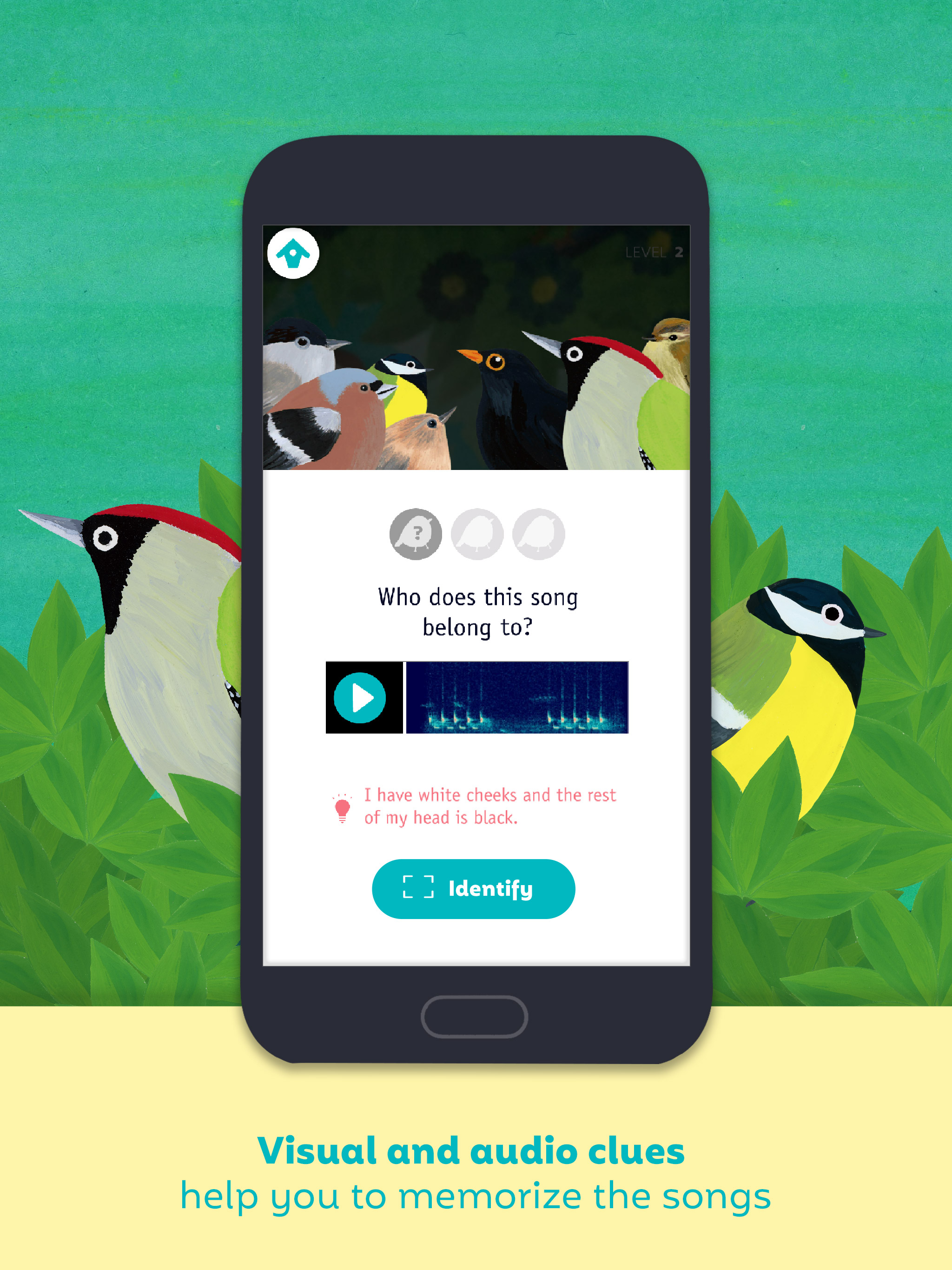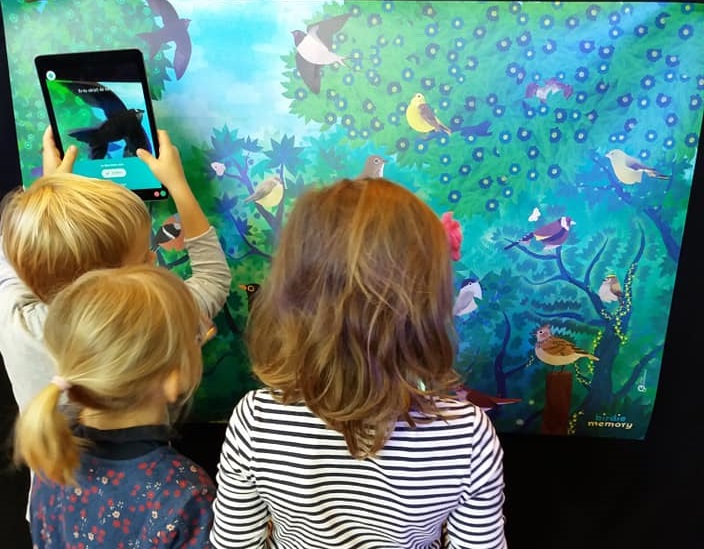Between the digital and the physical - birds come alive in funding winners learning app
We speak to Europeana #EdTech Challenge Winner Léna Mazilu about the launch of the educational app Birdie Memory, which brings together the digital and physical to teach children about 20 European birds and their songs.

- Title:
- Child playing Birdie Memory at Fête de la Nature, Paris
- Date:
- circa 2018
- Copyright:
- CC BY-SA
In today’s digital world most children do not play outside as much as in the past, hence are less aware of nature around them. Fascinated by nature, and working on meaningful projects that educate the young, multimedia designers Léna and Yoan developed Birdie Memory - a beautiful hand drawn poster of common birds and an app which, when pointed at the poster, brings the birds to life and song.
As one of the Europeana #edTech Challenge winners, how did this contribute to the development of your app?
I have always been attracted to biology and natural sciences and as a designer have already worked with augmented reality in children books. I found a wonderful selection of bird songs on Europeana which sparked ideas in my mind. With no other project constraints I had time to design the concept. Yoann as a software developer was looking to work on projects with more meaning, and so it was perfect timing.

#EdTech Challenge winners Maxime Zucca, Léna Mazilu and Yoann Guény (L-R), 2018, CC BY-SA.
Who is it for?
The game is for everyone, it’s especially good for children from the ages four and above but adults get hooked too.
What were the easiest and most challenging aspects of creating the app?
The hardest part to me was communicating and deciding on the business model, this is not our field so we had to decide on the price and look for shipping solutions. The easiest part was painting the birds.
Yoan on the other hand found that the easiest aspect of creating the app was to develop the user interface, because we made it clean and simple for the user. But on the other hand, the design (conception) of it was the most challenging part, because we had to understand how our users think.

Screen of Birdie Memory, 2018, CC BY-SA.
How did you choose the sounds for the app?
There are a lot of sounds, for example 20 sounds of the woodpecker and we didn’t know which one was the most representative. We let Maxim who is the ornithologist do the search, he selected two or three sounds per bird and then we decided on which sound was best suited in terms of length and quality.
How is Birdie Memory app different from other educational games? What makes it unique?
There are a lot of apps on learning bird sounds but, to my knowledge, there are no augmented reality apps for birding. For me, this kind of hybrid tool, a mix with a tangible object and the digital is really powerful because it uses the best of the two materials. With the digital you can have sound and feedback on your sound choice, if you selected the right or wrong one. You can repeat it a number of times, which makes it very good for your learning process, and at the same time having a physical support seems to be very important. It keeps the images fixed in your mind - if you read an article on the web, you are more likely to forget it and if you read the same one on paper, you will remember it. We memorise things a lot easier when they are part of our physical world.
Why do you think digital educational apps such as Birdie Memory can benefit learners?
We live in cities, children hardly go to play outside as much as in the past. We are very cut off from nature. This is an easy and simple way to reconnect a bit, for example if a child can recognise a blackbird then they are more aware, if one day he or she reads that they are disappearing then it can create an impact on them that may trigger them to be more invovled in preserving nature.

Children playing Birdie Memory at Fête de la Nature in Paris, 2018, CC BY-SA.
Do you have future plans for the game’s development? If so, what are they?
Our immediate plan is to launch the crowdfunding campaign which will allow us to print a lot more posters. We will try to make partnerships with NGOs and sell the posters in physical shops as well as our e-shop. If this proves successful, it will allow us to work on adaptations of the poster into books, puzzles, or cards.
Then our other ambitions would be to make some posters with birds of America and Australia, we would then go into also making posters with other animals as well. There is a lot that can be done with sounds.
If you like the idea, the app can be downloaded for free on the AppStore and Google Play while the poster can be purchased at a small price on the Birdie Memory website.

